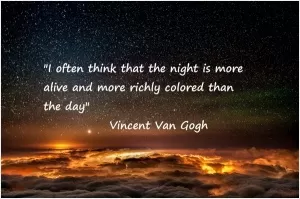It's only a few nutcases who do art for themselves, like Van Gogh

It's only a few nutcases who do art for themselves, like Van Gogh
David Bailey, the renowned British photographer, is known for his bold and unapologetic statements about the art world. One of his most controversial remarks is the assertion that "It's only a few nutcases who do art for themselves, like Van Gogh." This statement has sparked debate among artists and art enthusiasts alike, with some agreeing with Bailey's sentiment and others vehemently opposing it.Bailey's comment seems to suggest that true artists are those who create art for themselves, without concern for commercial success or public recognition. In this view, artists like Vincent Van Gogh, who famously struggled with mental illness and poverty during his lifetime, are seen as the epitome of artistic purity. Van Gogh's work, characterized by its emotional intensity and raw honesty, has come to symbolize the idea of the tortured artist who creates for the sake of art itself.
However, not everyone agrees with Bailey's assessment. Some argue that art is inherently a form of communication, and that artists create with the intention of sharing their vision with others. In this view, the idea of creating art solely for oneself is seen as selfish and ultimately limiting. Artists who seek to connect with their audience and provoke a response are seen as more successful in their craft.
Furthermore, the notion of the "nutcase artist" perpetuates harmful stereotypes about mental illness and creativity. While it is true that many artists throughout history have struggled with mental health issues, it is important to recognize that mental illness does not define or determine artistic talent. Artists should not be reduced to their mental health struggles, but should be celebrated for their unique perspectives and creative contributions to society.












 Friendship Quotes
Friendship Quotes Love Quotes
Love Quotes Life Quotes
Life Quotes Funny Quotes
Funny Quotes Motivational Quotes
Motivational Quotes Inspirational Quotes
Inspirational Quotes